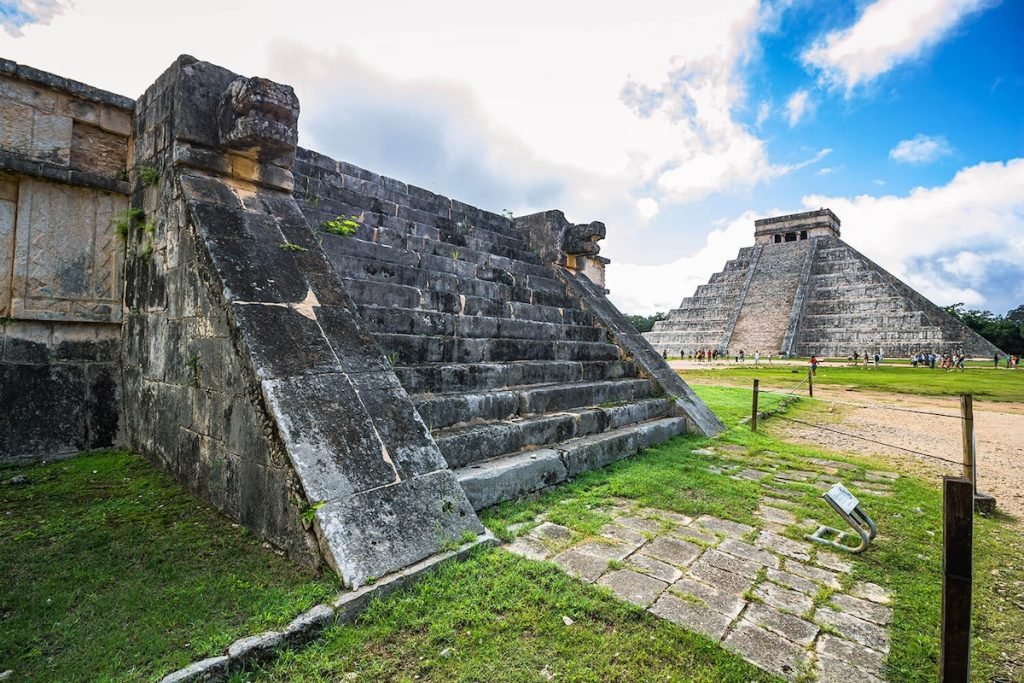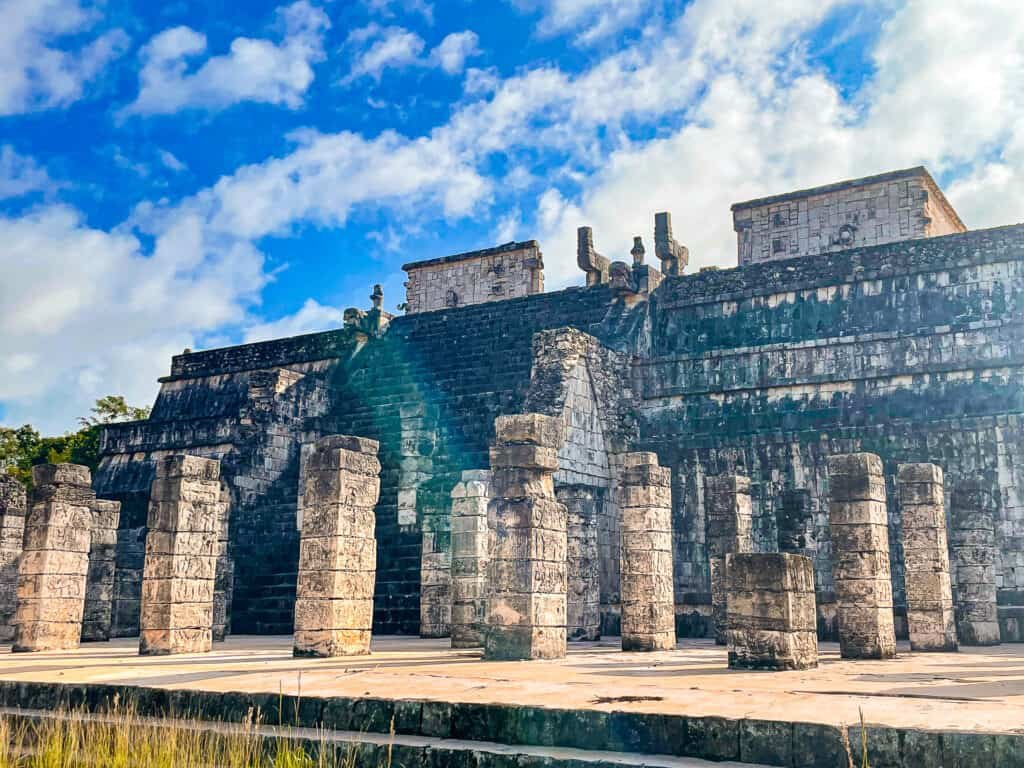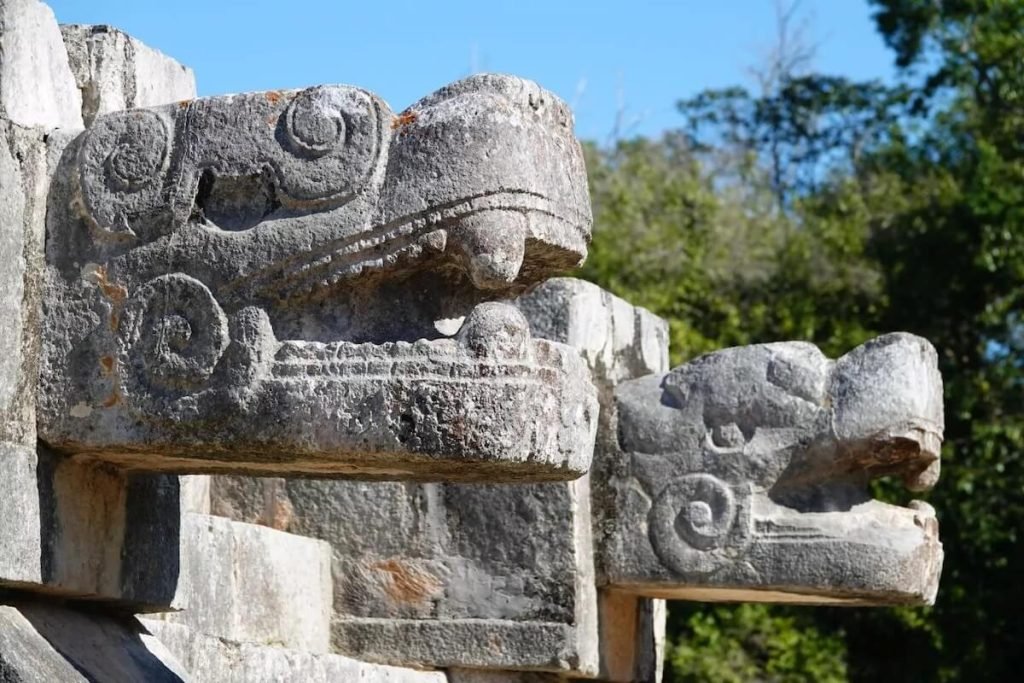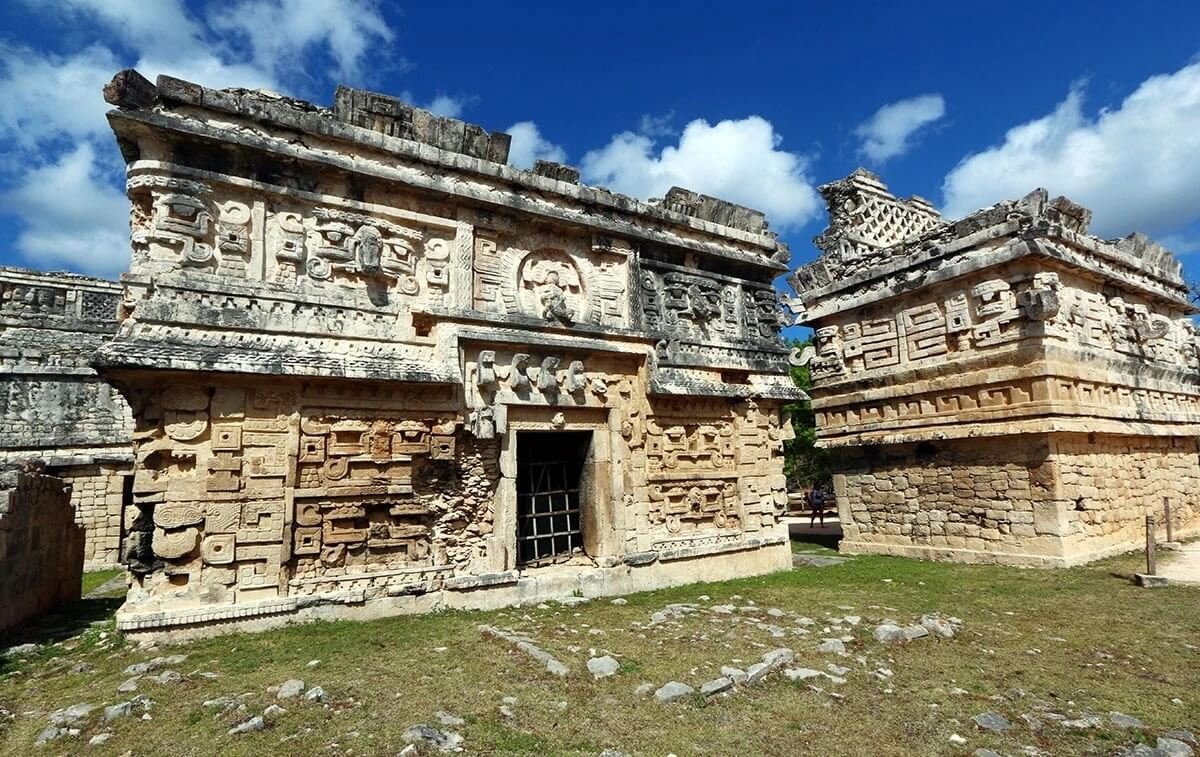
One of the most important and fascinating archaeological sites in the whole of Latin America is in the Yucatan and this includes the history of Chichen Itza.
The ruined city, which was declared a World Heritage Site by UNESCO in 1988, is one of the most visited highlights in Mexico.
Located in the north of Yucatán, it not only delights fans of history and architecture, but also offers a wonderful panorama and arouses curiosity about a time long gone.
Find out more about this beautiful, ancient Mayan city and why it’s worth a visit!
At the edge of the Itzá fountain

With an area of around 15 square kilometers, Chichén Itzá is one of the most extensive sites in the Yucatán and extends to the outskirts of the small town of Pisté in the west.
There is a lot to discover around the ruins in the impressive karst terrain. The numerous karst caves (sinkholes) give a clue to the origin of the name: translated, it means “at the edge of the well of the Itzá”.
Wells refer to these water-bearing sinkholes, which were used for various purposes.
On the one hand, various plants such as cocoa could be grown in funnel-shaped collapse dolines (“rejolladas”) due to special temperature conditions and their own microclimate.
On the other hand, the water-bearing sinkholes “Cenote Sagrado” and “Cenote Xtoloc” were mainly used to ensure the water supply in Chichén Itzá.
Nowadays, they are a popular destination for swimming and refreshing yourself in the cool water!
Unique mix of architectural styles ,
an important point for the history of Chichen Itza

Chichén Itzá is particularly famous for its unique architecture.
Different types of buildings and styles with unusual façade designs make a trip here a special experience, and not just for architecture lovers.
In addition to buildings in the “Puuc style”, a special Mayan architectural style, there are also buildings with Toltec features. The influence of emigrants from central Mexico (“Toltecs”) and conquerors from Tula is particularly noticeable here.
It is assumed that these diverse styles emerged at the same time.
One of the “new seven wonders of the world”

The well-preserved step pyramid “El Castillo”, also known as the Temple of Kukulcán, is the undisputed crowd-puller in Chichén Itzá.
However, it has this status not only because of its impressive construction and height of 30 meters, but also for another reason: twice a year at the equinox, one side of the pyramid sinks almost completely into shadow at sunset.
A special interplay of light and shadow on the stairs creates the impression that a snake is winding its way down. For a short time, the shadow connects with the snake’s head at the foot of the pyramid and represents a feathered serpent, a special symbol of Mayan culture.
City of temples and pyramids

Around the famous step pyramid in the center, which is a picturesque sight in itself and a popular photo motif, there are several other monumental buildings.
The ruins of the houses in the surrounding area were once inhabited by the upper classes. Other sights in Chichén Itzá include the warrior temple with the imposing Hall of a Thousand Columns, which run to the south and east of the temple.
The Temple of the Jaguars is also worth a visit due to its complex and elaborate façade design.
The large ball court “Juego de pelota” was mainly used for ceremonial purposes and to demonstrate political or religious power. The Mercado, on the other hand, is a wonderful example of court galleries that were built after the heyday of the Maya.
This multitude of temples and platforms is connected by walled streets, so-called “sacbés”.
German tours for the best travel experience

Especially when visiting historical sites such as Chichén Itzá, you want to learn as much as possible about the excavation sites of the ancient Mayan cultures.
This can sometimes be difficult with a local tour guide if knowledge of Spanish or English is required. If you want to make the most of your visit, you can also book German-speaking, guided tours can also be booked.
The motivated guides have a lot of detailed knowledge and expertise and can tell many an exciting anecdote. If you want to spend several days there, there are also accommodation options on site.
Interesting facts at a glance:
– Chichén Itzá has been a UNESCO World Heritage Site since 1988
– The excavation site is located in a karst areawhose numerous caves and hollows invite you to explore
– As a melting pot of cultures, there are architectural influences from Meso-America and the Toltec civilization
– The Temple of Kukulcán or “El Castillo” is considered an ancient calendar: it comprises four staircases, each with 91 steps, which together with the top platform make 365 steps – exactly as many as the days in a year
– The famous step pyramid was named one of the new seven wonders of the world
– Inside the pyramid there is a unique acoustic, the distorted echo of which is known as the “song of the quetzal”, a sacred Mayan bird
– At the equinox, you can observe a unique interplay of light and shadow, which brings the symbol of the feathered serpent to light
– Chichén Itzá is best visited early in the morning, when the light conditions are best for breathtaking photos

